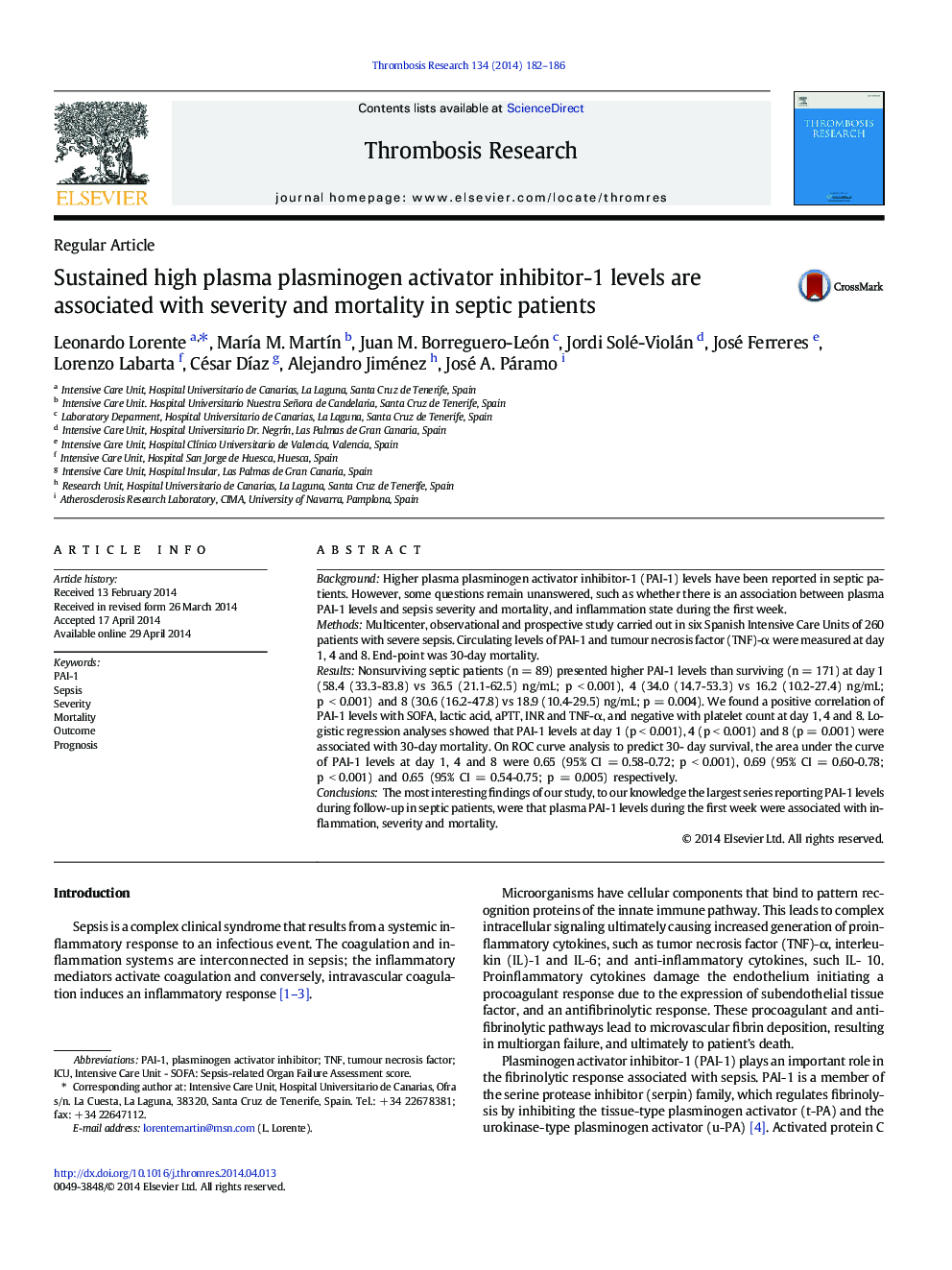| Article ID | Journal | Published Year | Pages | File Type |
|---|---|---|---|---|
| 6000872 | Thrombosis Research | 2014 | 5 Pages |
BackgroundHigher plasma plasminogen activator inhibitor-1 (PAI-1) levels have been reported in septic patients. However, some questions remain unanswered, such as whether there is an association between plasma PAI-1 levels and sepsis severity and mortality, and inflammation state during the first week.MethodsMulticenter, observational and prospective study carried out in six Spanish Intensive Care Units of 260 patients with severe sepsis. Circulating levels of PAI-1 and tumour necrosis factor (TNF)-α were measured at day 1, 4 and 8. End-point was 30-day mortality.ResultsNonsurviving septic patients (n = 89) presented higher PAI-1 levels than surviving (n = 171) at day 1 (58.4 (33.3-83.8) vs 36.5 (21.1-62.5) ng/mL; p < 0.001), 4 (34.0 (14.7-53.3) vs 16.2 (10.2-27.4) ng/mL; p < 0.001) and 8 (30.6 (16.2-47.8) vs 18.9 (10.4-29.5) ng/mL; p = 0.004). We found a positive correlation of PAI-1 levels with SOFA, lactic acid, aPTT, INR and TNF-α, and negative with platelet count at day 1, 4 and 8. Logistic regression analyses showed that PAI-1 levels at day 1 (p < 0.001), 4 (p < 0.001) and 8 (p = 0.001) were associated with 30-day mortality. On ROC curve analysis to predict 30- day survival, the area under the curve of PAI-1 levels at day 1, 4 and 8 were 0.65 (95% CI = 0.58-0.72; p < 0.001), 0.69 (95% CI = 0.60-0.78; p < 0.001) and 0.65 (95% CI = 0.54-0.75; p = 0.005) respectively.ConclusionsThe most interesting findings of our study, to our knowledge the largest series reporting PAI-1 levels during follow-up in septic patients, were that plasma PAI-1 levels during the first week were associated with inflammation, severity and mortality.
